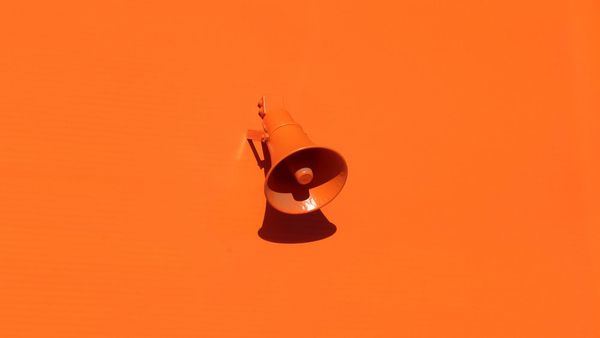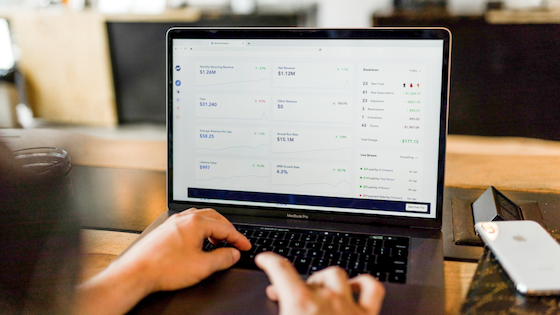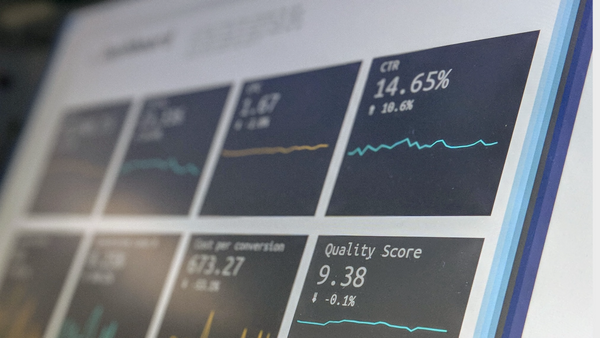7 minute read
When the Price Isn’t Right: Essential Amazon Pricing Strategies and Psychological Triggers
An economist would say that the ideal price for any commodity is exactly at the point where supply meets demand. So how do we know when the price is right on Amazon?
Pricing an item is more complex than it seems. Not only is the price supposed to be the point where supply and demand meet; it’s also where the interests of the seller and customer meet. Simply put, you want to create a win-win pricing model, where you place a value on your product that your customer “agrees” on. They need to be satisfied with the deal they make when buying your product. You need to be satisfied with the price you’re selling at, or risk not being profitable.
So, if you’ve ever wondered how to price products on Amazon, keep reading. In this post, we’ll look at different Amazon pricing strategies, plus bonus psychological triggers you need to know to make sure your price is right.
Amazon Product Margins
First of all, the goal for an Amazon seller isn’t getting the most sales. Winning at Amazon is about making the most profits. While formulating your pricing strategy be aware of the cost that goes into your product in order to identify the price range you can operate within. These parameters are fairly specific in certain ways when it comes to selling on Amazon, and the fees are predictable.
There are 3 types of fees applicable to sellers using the FBA (Fulfilled By Amazon) service. (If you’re fulfilling your own orders, you only need to pay Amazon referral fees.)
Amazon storage fees – Fees charged for the service of storing your inventory in an Amazon FBA warehouse. Storage fees can change depending on how long your inventory has been sitting in the FBA warehouse.
- Amazon fulfillment fees – Fees charged for handling any individual unit of product and making sure it’s packaged and shipped to your customer
- Amazon referral fees – Fees associated with selling on Amazon. Referral fees are fixed to your total price. That number is usually 15%; however, at the start of 2019, there have been a number of changes to the fee structure on Amazon, which vary between product categories.
Amazon FBA Pricing Strategies
A solid approach to determining your margins, as well as your pricing strategy on Amazon is to know all the relevant details about your product and use the FBA revenue calculator. The relevant information about your Amazon product includes the exact dimension and the weight of the product, as well as the category it falls into. You should also know what your other per unit costs are, such as manufacturing and shipping.
Once you know the relevant factors that go into your product cost, you have a solid foundation to make some educated choices about your pricing strategy. There are several basic approaches to finding the right price tag for your product on Amazon. They depend on your overall product strategy as well as your competitive advantages. Generally, an Amazon product falls into three broad categories, each with their own unique pricing strategy.
Premium Amazon Product Pricing Strategy
This is a pricing strategy that implies the product you’re selling is either of higher performance/quality than what would usually be considered a standard in its category. This type of pricing needs to be accompanied with a branding strategy that matches it.
Products sold at a premium can usually be related to a certain type of lifestyle or more intense interest. If you fall into that category you might want to ask yourself “How much of a premium product am I selling?” In other words, it’s quite possible that the higher the price, the more attractive a product might be.
Let’s take a look at an example:

Here, we have two chef’s knives to compare. At first glance they both look very well made, able to chop up pretty much anything you place on a chopping board. However, if you’re a culinary enthusiast eager to have a blade that reflects your passion for cooking – the higher priced one may be more appealing to you.
The point here is that even if you can afford to sell your product at lower prices, for a premium item you might sell more at a higher price tag.
Standard Amazon Product Pricing Strategy
This Amazon pricing strategy implies that your selling price would fall into what would be considered an “expected price range” for your product category. Just like in the previous approach, a branding or placement strategy is key. After all, if you’re selling the same thing everyone else is at the same price, how are you supposed to stand out?
The most common example we can come across would be highlighting a product that has more value at the same price as its competitors. This could be either by having additional features or being of a higher quality. The Joseph Joseph rolling pin is a great example of a product that stands out and can command a higher price.

It’s no surprise that this rolling pin is dominating its competitors. However, the standard pricing strategy does not always have to be accompanied by a bevy of features. Sometimes, finding an emerging niche and adding minimal differentiation through your product description is all that it takes to reap profits.
Value Product Pricing Strategy on Amazon
This particular Amazon product pricing strategy is based on selling an item that’s affordable and gets the job done. In many cases, having the lowest price does mean getting the sale. However, positioning your Amazon product using the value strategy does come with some challenges. The most important one is that you might be competing with Amazon itself. Amazon has their own private label, and it’s called Amazon Basics.
Amazon Basics sells off-brand items that they’ve noticed customers don’t have a preference for. In other words, exactly the types of products that would fall into the “value category” for Amazon shoppers. So, if you intend to launch a product using competitive value-based pricing, make sure you don’t have an Amazon Basics product in your category.

Another issue with selling inexpensive products is associated with Amazon PPC. With slim margins you cannot really afford to pay a lot for a click. You also cannot afford to have anything other than an extremely high conversion rate. Basically, if you’re making a few dollars of profit for each unit sold, you cannot exactly afford to spend $1 to get a click that leads to a sale. That’s not even to mention how difficult it is to actually find and identify a keyword that converts well.
However, there are certain situations where the lower price point might prove to be a huge advantage, such as:
1) Establishing yourself as the affordable option for a type of product that’s slowly moving from being a novelty to a necessity someone will order again and again on Amazon.
2) Selling your products in multipacks to create a comparative pricing strategy.
With cheap products you have the option of experimenting with multipacks to broaden your margins per unit. In this way, you may be able to overcome your PPC issues and gain a competitive advantage.
The Psychology of Amazon Product Pricing
With some of the major pricing strategies covered, let’s look at what can we can do with the actual price tag on our product to make it more attractive. Turns out, you can alter a lot about the way you present your product’s price psychologically in a brick-and-mortar retail setting. Luckily for us, those psychological trigger points are applicable to shopping on Amazon:
- 1) Reduce the price by one dollar
We’ve all seen prices ending in .99 or .95 for various items our whole lives. Have you ever wondered why it’s such a long-standing pricing strategy? It turns out that our brains make an initial perception of a number before we even finish reading the whole number.
Meaning that the first digit in the price is what leaves the lasting impression.

In the example above, it means that by reading a price tag of $29.95 our initial response is that it’s “20-something dollars.” Even though the price is basically $30, psychologically we won’t experience it that way.
You can use this knowledge to your advantage on your Amazon store. See if you can modify your product price perception if you reduce the first digit by $1 or less.
2) Reduce the number of syllables in the price
Product pricing research has shown that fewer syllables can make the product’s price seem more reasonable to pay.
“If you want people to perceive the price to be more reasonable, leave off the commas and the cents when you say and write the prices. People will perceive the price to be a bit more reasonable”
Granted, this may seem counter intuitive when using the previous example. Yet, this might be a great approach to pricing your Amazon products when you simply cannot afford to lower the price to a point where you reduce the first digit by one.

3) Use rounded prices appropriately
If you’re having trouble deciding what goes after the comma, you might have a product where a rounded price is more suitable. When we see a rounded price (like $30) we process it fluidly, as opposed to ($29.99). Why? It turns out that when we make emotional purchases we’re more likely to buy a product with a more rounded price. Once we have our eyes set on something a rounded price, it will “feel just right”, according to research.
How do we reconcile rounded pricing versus lowering the price with rounding down? This is another strategy to test, especially when you can’t make a big perceived jump in value by lowering the price by 5 cents (for example, $15 versus $14.95)
Bonus Amazon Pricing Strategy You Need to Know
There’s one more psychological effect to take into account when pricing your goods on Amazon: Having the discounted price on your listing, such as this:

Unknown to many, having your Amazon product price presented as a discounted price is an option every seller has. There’s no special condition to be met. Just go to your Amazon Seller Central account to set it up.
To set a sale price on your Amazon goods, simply go to Inventory> Manage inventory> Select your product> Offer> Manufacturer’s suggested retail price.

You can put the other/original price and that price is displayed as the scratched-off price next to your actual selling price. There’s also an added bonus of seeing the “you will save X amount (X%)” on your Amazon listing. Here’s our final parting tip, if you put in a manufacturer’s suggested retail price between 20%-40% higher than your selling price, you can expect it to have an effect. Just make sure not to overdo it. Make sure your price difference is reasonable.










